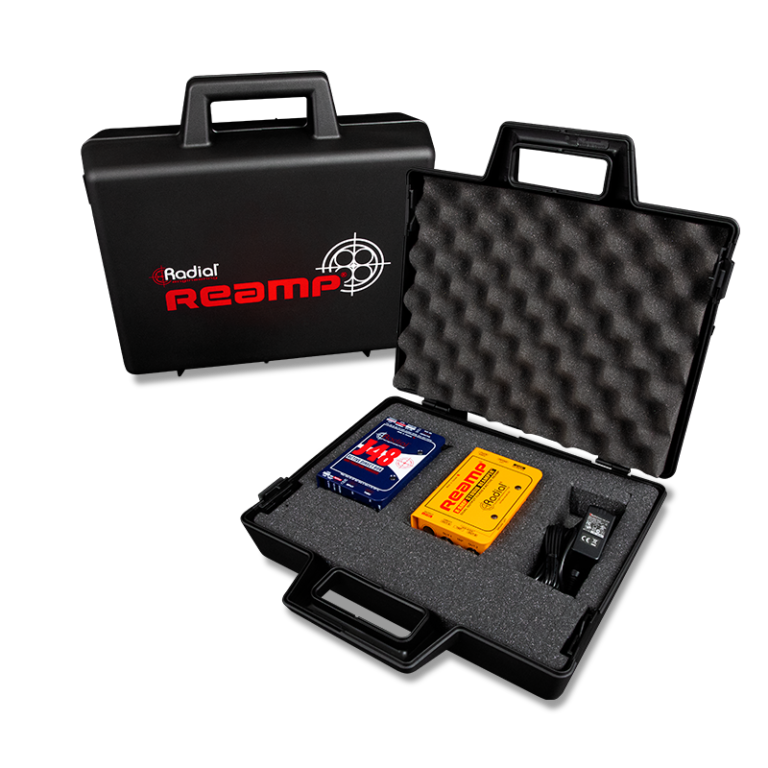


There's too much variation in setups to say whether you need a reamp box. Same as any cable carrying low-level signals.Ģ) If there is mains-frequency hum, break the loop (use a reamp box). Had there been hum with the unbalanced connection, I would have expected the transformer to get rid of it, but there wasn't.ġ) long cable runs generally need to be balanced (use a reamp box), short cable runs may be fine unbalanced. So I can't say from experience.Ī 1:1 transformer gave no improvement in noise, and any tonal difference was so subtle I may have been imagining it. Straight into the amp should be no different, although I've never dispensed with the pedal. I've reamped from the output of a Delta 66 to a boost pedal using about 5-foot cable, the tone was pretty much the same as plugging the guitar straight into the boost. These effects may be inaudible or close-to, but it's difficult to imagine how a signal passed from a DA interface to an amp through a transformer will be more identical to the recorded tone than if the transformer weren't there. With short cabling, good grounds, and an AC-coupled line out these advantages may not be required.Ī reamp box also limits bandwidth and adds low-frequency distortion (primarily 3rd harmonic) in the transformer core. Also removes any DC offset from your line out. You will need to attenuate the signal after the DI though, since it is too loud to go directly to the amp, and turning down the output digitally will introduce alot of noise.Click to expand.A reamp box provides rejection of noise picked up by the cable, and breaks ground loops. The DI box is very simple - it only contains a transformer, a switch and the connectors - these components doesn't care at all about the "direction" of the signal: Audio Interface -> DI Out, DI In -> Amp). DI400P) or a Millenium DI-E and use it in reverse (i.e. If you find the Radial devices too pricey there is a cheap alternative - get a passive Behringer DI (e.g. this one:Īlternative Reamping using a passive DI in reverse However if you are reamping out through real amps you will need a reamp box ("reverse DI") and possibly also a volume pedal if your reamp box does not have an attenuation pot. Put on a heavy distortion plugin temporarily and move around listening for the best location and angle and mark that spot.Īdditional info if you are reamping yourself VERY IMPORTANT: test the best location for the guitar - there are many electric noise sources (CRT screens, laptops, lights, cell phones, power supplies etc) that will get picked up by the guitar.Use a high quality cable and don't place it on noisy things like power supplies.Make sure your guitar is turned all the way up.What is extremely important is these points Recording straight into the interface will not introduce additional noise - on the contrary you make the signal path shorter (and the introduction of a balanced additional path span will definitely not remove noise from the initial unbalanced part from guitar to DI). Pickups and will deliver the true sound of the instrument withoutīut this is really just a general advice - using a DI will work regardless of wether your audio interface has a Hi-Z / Instrument input or not - a device with a Hi-Z input doesn't "load down" the pickups. This active DI is ideal for Reamping as it will not load down the DI boxes convert an unbalanced signal to a balanced low impedance signal, and reamp boxes, on the contrary, convert a balanced signal to an unbalanced signal with a high impedance. Start by recording with the industry standard Radial J48 direct box. When comparing reamp box vs DI box, we should establish that both devices are very similar, yet are used for different purposes. Radial, one of the reamping pioneers, does recommend using a DI for tracking though: I am doing similar jobs for clients and here is my advice on how you should do it.Īs long as your audio interface has a Hi-Z or Instrument input you're good. 8 out of 10 guitarists play solos when you ask them to 'just play something so I can get a tone'. Using a passive DI sometimes helps if it has buzzes or ground loops or whatever. I have 4 main outputs on the FA-66, 1&2 are Left&Right outputs and are controlled by the volume knob and. Delta 10/10LT has switchable +4 or - 10 output calibrations. You should really ask the studio how they want it done. Been re-amping for years with out a 'ReAmp' device.


 0 kommentar(er)
0 kommentar(er)
